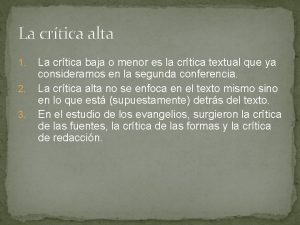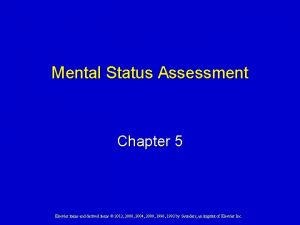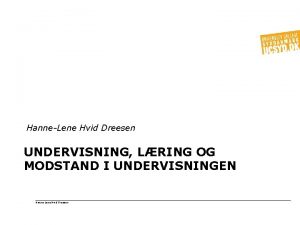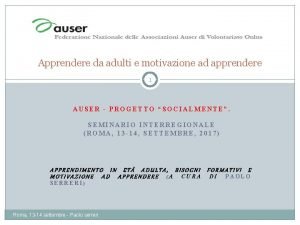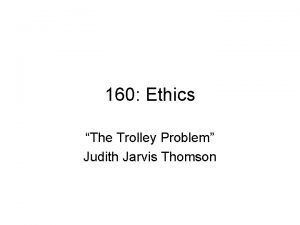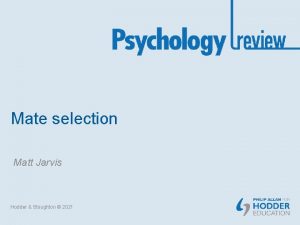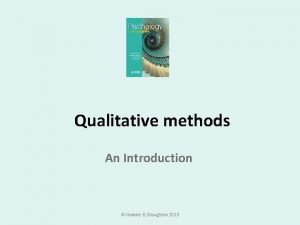Theory of mind Matt Jarvis Hodder Stoughton 2020







- Slides: 7

Theory of mind Matt Jarvis Hodder & Stoughton © 2020

Defining theory of mind The cornflakes example To understand what is happening when someone goes to the kitchen cupboard that usually contains the cornflakes: They want cornflakes They think the cornflakes are in the cupboard They are wrong — I ate the cornflakes Three judgments requiring theory of mind. Hodder & Stoughton © 2020

A confusing term Theory of mind is confusing because it sounds like it should be a psychological theory. It is not a theory. Instead it refers to the individual theories we have about what is happening in the minds of others. What are they thinking? What do they believe? What are they feeling? Why are they doing that? What do they want? Hodder & Stoughton © 2020

Self-presentation Children are capable of understanding why people mask their emotions in order to influence other people’s impression of them. For example, that a sad person might act happy in order to appear resilient. This requires theory of mind because it involves: • understanding that people sometimes want to hide their real feelings • understanding that other people may judge them based on their real feelings Hodder & Stoughton © 2020

Atypical development Baron-Cohen and colleagues found that children on the autistic spectrum found theory of mind tasks very difficult. The Sally-Anne task Sally has a marble in her basket. When she is out of the room Anne moves the marble to her box. Where will Sally look for the marble when she comes back? The Sally-Anne task requires children to realise that Sally will not know Anne has moved her marble. When the task was administered using dolls and human actors, children on the autistic spectrum did worse on the Sally-Anne task than others, including younger children and those with other learning disabilities. Hodder & Stoughton © 2020

Social development High level of theory of mind predicts later good social development Poor theory of mind predicts poorer social development. BUT • This does not mean there is a simple causal relationship between theory of mind and social development. • We cannot assume that enhancing theory of mind will impact positively on social development. Hodder & Stoughton © 2020

Conclusions • Theory of mind is an important cognitive ability. • It involves the understanding of what is happening in the minds of other people. • Theory of mind is important in understanding selfpresentation. • Children on the autistic spectrum do worse on some theory of mind tasks. • Good theory of mind skills are associated with good social development. Hodder & Stoughton © 2020

